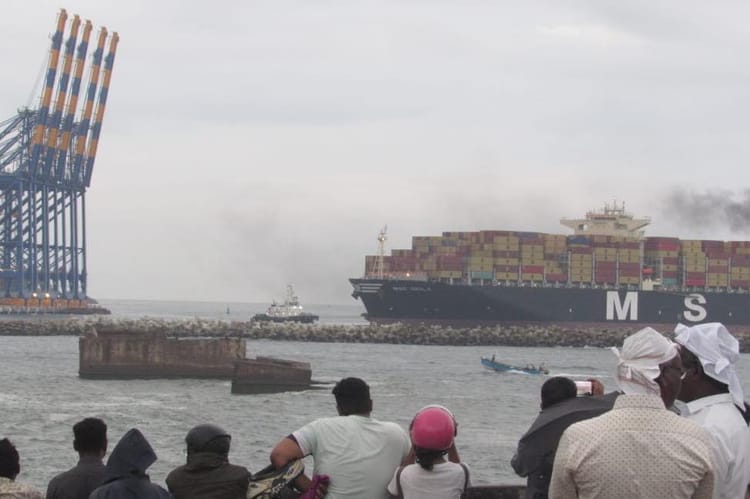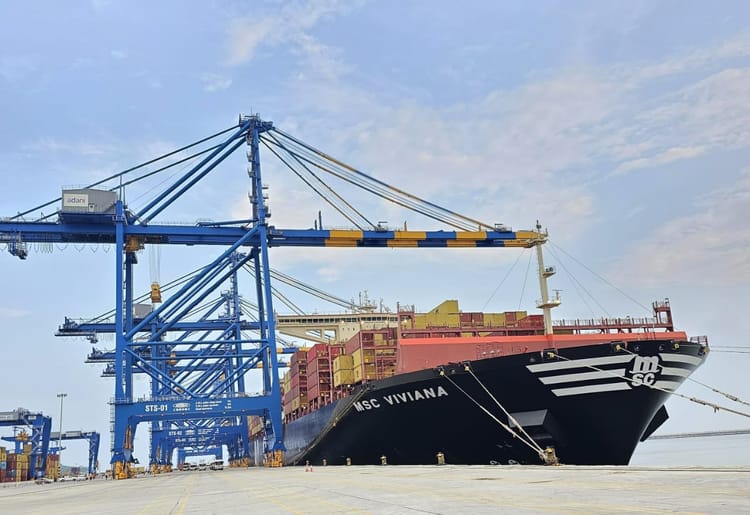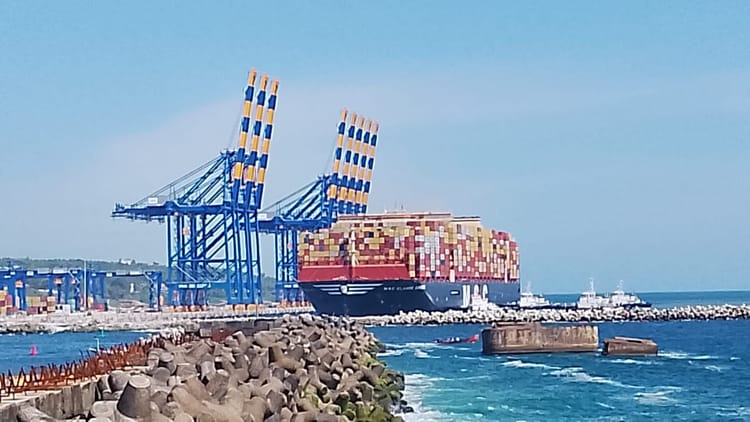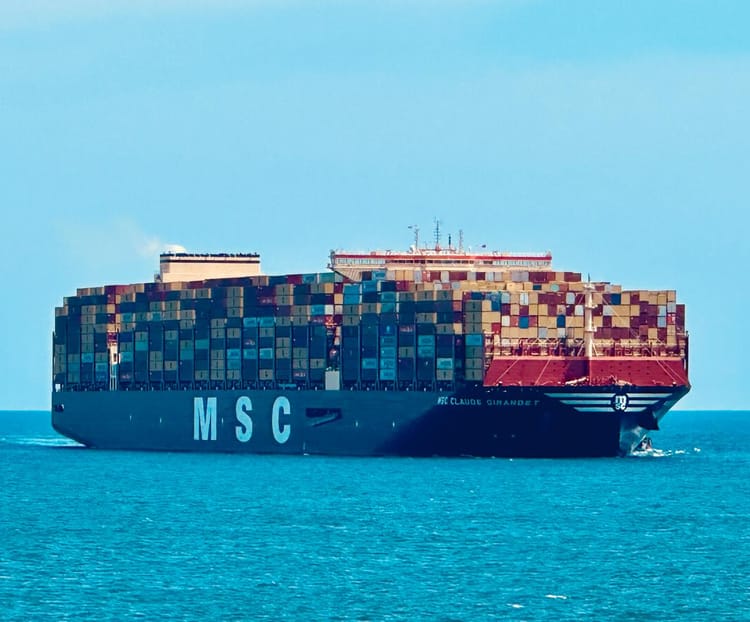India signs an agreement with India!

It has often been felt that Keralites are a pampered lot. Our latest demand is that the government should arrange waste collection facilities at the comfort of our homes, despite the possibilities of processing or using it in different ways. Similarly, public roads turn into dumping grounds which receive anything from car wash to pet wastes. The public notion is that governments should provide more and more free services, with the latest demand being for free internet. Governments are also equally at fault in encouraging such dependencies, the Chinese proverb, ‘Give a man a fish and he will eat for a day. Teach a man how to fish and you feed him for a lifetime’. Thus, it can be said that Keralites who meander through lottery and beverage shops every day have not experienced the miseries and hardships experienced by other people in the world or for that matter in other parts of the country.
Kerala, being a region blessed with relatively stable weather conditions, Malayalis are agitated with the slightest change in weather conditions, and often are unwilling to make minor adaptations to their lifestyles to cope with them. From January to September 2022, there were 15 weather disasters in the United States, causing an estimated loss of over USD 15 billion[1]. Hurricanes and typhoons have become a regular phenomenon in the United States. Have Keralites ever experienced the harsh winters experienced in Europe or Canada? Nor has the temperatures in Kerala gone beyond what is experienced in Saudi Arabia and UAE, or even Delhi, for that matter.
Last June, 1,739 people died and 12,867 were injured in the floods in Pakistan[2], with estimated losses of USD 15.1 billion[3]. Comparing these disasters with the Kerala floods of the last two years, which collectively took lives of 521 people puts in perspective the scale of such disasters. Kerala has never experienced the miseries of border wars. In fact, during the freedom struggle, Kerala was never at the forefront. While even small border skirmishes in Punjab, Kashmir, and the North Eastern states create terror for Keralites, they hardly intervene with daily lives beyond the news headline or the WhatsApp forwards.
Kerala has become an economic structure in which people can earn at least INR 1000 per day, even if they do not engage in an active economic activity, thanks to the key decisions of other countries. A recent example is the Al Jurf project in Abu Dhabi. 37 lakh sq. metres of land was developed by a real estate company through a canal project starting from the sea and ending at the sea with a distance of 4 km. Projects like Palm Jumeirah, Palm Jebel Ali, The World, and Burj Khalifa are world known. As a part of the construction of these global dream projects, about INR 93,000 crore (~USD 13 billion) of expatriate money comes to Kerala every year[4]. This influx of money has in fact made Keralites lazy, and this laziness has evolved not only into lack of industriousness but also into astonishing ignorance.
Each country and region tries to solve their limitations by testing and experimenting. One instance is the Kaladan Multi-Modal Transit Transport Project (KMMTT), which starts in India and runs through Myanmar.
Do Keralites understand the difficulties of the landlocked north eastern states of India, while we waste away 590km of coastline?[5] The Siliguri region of West Bengal, just 22 km wide, has been one of India's all-time concerns. If China occupies this "chicken's neck" of India, which is only 130 km away, the population of around 5 crores and seven states (the "Seven Sisters") will be in crisis. India's solution to this danger was the KMMTT project in 2008. The KMMTT project is a multi-modal route that starts at the Kolkata port, goes via the Sittwe port in Myanmar, then through Paletwa, and finally reaches the Indian state of Mizoram. It crosses the sea, backwaters, and rivers. INR 535.91 crores was allocated to the project in 2008, later increasing it to INR 2,904.04 crores in 2015. This is a typical example of how sometimes, money can’t buy everything. The project was then re-conceived as a way to stimulate economic development in Myanmar thus, ensuring the approval of the Myanmar government. Yet, India took full responsibility for the project given its criticality to its states. Cargo dispatched from the Kolkata port will arrive at the Sittwe port in Myanmar. From there, the next 153 km journey is through the Kaladan River. This cargo will dock at the Paletwa port. From there, the cargo will reach Mizoram after travelling 109 km by road! This is India's agreement to deliver Indian goods to the Indian state of Mizoram via Myanmar.
It is through such complexities that a region survives. Contrast it with Kerala, where global goods pass through the courtyard on a daily basis, we turn our backs and moan in prosperity. Keralites in their country think that they are a great race. How many people realise that this glut is due to the generosity of labour of those who left Kerala? There must be such a realisation. Along with that, a vision should be formed that utilises all the development potential of the country. It should also have a national perspective because the 590 km coastline in front of Kerala is India's asset. A blue economy that can change the country's poverty and backwardness should be born from that vision.
References -
[1] National Centers for Environmental Information (NCEI). (January 10, 2023). Billion-Dollar Weather and Climate Disasters. Retrieved from https://www.ncei.noaa.gov/access/billions/
[2] National Disaster Management Authority. (18 November 2022) "NDMA Floods (2022) SITREP - 2022 (Daily SITREP No 158 Dated 18th November, 2022)" (PDF). Retrieved from https://cms.ndma.gov.pk/storage/app/public/situation-reports/November2022/N2n1eEarMt6q6Rb8ZYwn.pdf
[3] The World Bank. (October 28, 2022). Pakistan: Flood Damages and Economic Losses Over USD 30 billion and Reconstruction Needs Over USD 16 billion - New Assessment. Retrieved from https://www.worldbank.org/en/news/press-release/2022/10/28/pakistan-flood-damages-and-economic-losses-over-usd-30-billion-and-reconstruction-needs-over-usd-16-billion-new-assessme
[4] Mint. (January 07, 2021). COVID-19 impact: 8.7 lakh expats return to Kerala; half of them due to job loss. Retrieved from https://www.livemint.com/news/india/covid19-impact-8-7-lakh-expats-return-to-kerala-half-of-them-due-to-job-loss-11610031693569.html
[5] ENVIS Hub: Kerala. (February 02, 2022). District wise Distribution of Coastline of Kerala. Retrieved from http://www.kerenvis.nic.in/Database/Coastline_2346.aspx
Note - The picture is indicative (not an official version) and created on Google Maps by the authors.The post was originally written by Elias John in Malayalam and later translated to EnglishThis article © 2023 by Motherport News is licensed under CC BY 4.0




